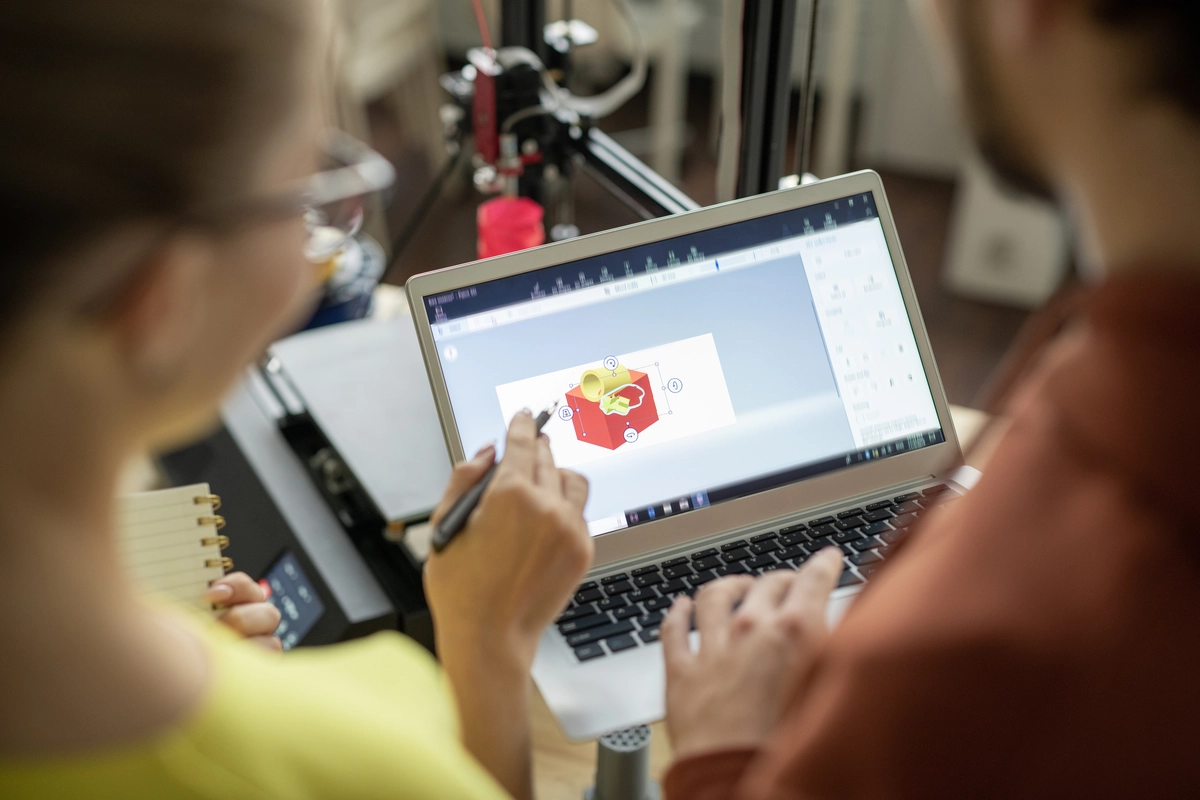Another game-changer is AI-powered graphics. Yep, you heard that right – artificial intelligence isn’t just for sci-fi movies anymore. AI is being used to enhance graphics by predicting movements and behaviors, which means smoother animations and more responsive gameplay. It’s like having a co-pilot who can predict every twist and turn before you even think about it.
And let’s not forget about virtual reality (VR) and augmented reality (AR). These technologies are revolutionizing how we interact with computer graphics. VR immerses you in a completely virtual world, while AR overlays digital information onto the real world around you. It’s like stepping into a whole new dimension where anything is possible – from exploring distant galaxies to designing your dream home.
On the software side, procedural generation is making waves. Instead of manually creating every detail, designers can use algorithms to generate vast, realistic worlds on the fly. It’s like having a magic paintbrush that can create entire universes with just a few strokes.
Lastly, the democratization of tools is empowering artists and creators like never before. With easier access to powerful software and hardware, anyone with a spark of creativity can bring their visions to life. It’s like giving everyone a backstage pass to the world’s biggest art show.
So there you have it – the latest trends in computer graphics are pushing boundaries and reshaping the way we experience digital content. Whether you’re a gamer, a designer, or just someone who loves to be amazed, there’s never been a more exciting time to dive into the world of computer graphics.
AI-Powered Realism: How Machine Learning Is Redefining Computer Graphics
In the realm of gaming, AI algorithms are transforming static environments into dynamic, lifelike worlds. Gone are the days of repetitive landscapes and predictable character movements. Now, AI analyzes player behavior in real-time, adjusting everything from lighting and textures to the behavior of virtual NPCs (non-playable characters). This means every decision you make influences the world around you, creating a truly immersive experience that feels more like an alternate reality than a game.
But it’s not just gaming that’s benefiting from AI-powered realism. Industries like film and architecture are also seeing major advancements. Imagine architects using AI to simulate how natural light will interact with a building at different times of the day, or filmmakers creating digital actors that are indistinguishable from their human counterparts. These applications of AI are not just enhancing creativity but also streamlining workflows and reducing costs.
At its core, AI-powered realism harnesses the vast capabilities of machine learning to understand and replicate the complexities of the natural world. By analyzing massive datasets of real-world phenomena, AI algorithms can generate graphics that are not only visually stunning but also scientifically accurate. This blend of art and science is paving the way for a new era of creativity and innovation.
As we look to the future, the potential for AI-powered realism seems limitless. From virtual reality experiences that are indistinguishable from the real world to training simulations that prepare professionals for high-stakes scenarios, the impact of this technology is profound. As AI continues to evolve, so too will our ability to create, explore, and experience worlds that were once confined to our imaginations.
From Virtual to Reality: Exploring the Rise of Augmented Reality in Graphic Design
In recent years, augmented reality has revolutionized the graphic design landscape, bridging the gap between digital concepts and tangible experiences. It allows designers to overlay digital images onto physical spaces, transforming how we perceive and interact with visual content. Whether it’s enhancing advertisements with interactive elements or creating immersive brand experiences, AR opens up endless possibilities.
One of the most awe-inspiring aspects of AR in graphic design is its ability to turn static visuals into dynamic, interactive narratives. Imagine walking down the street and seeing a mural come to life, telling a story with animations and sound. This isn’t just futuristic dreaming—it’s the reality that AR is bringing to the forefront of creative industries.
Another remarkable feature of AR is its accessibility. What was once confined to high-end studios and complex software is now within reach of anyone with a smartphone or tablet. Apps and tools designed for AR graphic design empower both professionals and amateurs to explore new dimensions of creativity without needing extensive technical knowledge.
The impact of AR extends far beyond aesthetics; it’s changing how brands engage with their audiences. By integrating AR into marketing campaigns, companies can create memorable experiences that leave a lasting impression. Whether it’s trying on virtual clothes before buying or visualizing furniture in a living room, AR is transforming consumer interactions in unprecedented ways.

The Future of Interface Design: Seamless Integration of 3D Graphics in UI/UX
Picture this: instead of flat, static buttons, you have interactive elements that pop and react to your touch, almost like handling physical objects. This immersive experience goes beyond aesthetics; it enhances functionality and user engagement. Whether you’re exploring a virtual showroom, manipulating a 3D model, or simply scrolling through a webpage, the depth and realism brought by 3D graphics add a layer of intuitiveness that traditional designs often lack.

Moreover, this evolution isn’t confined to entertainment or gaming; it’s permeating every facet of digital interaction. From e-commerce platforms offering virtual try-ons to educational apps simulating complex concepts, 3D UI/UX is democratizing access to engaging and informative experiences. It’s about making technology more accessible and user-friendly, catering to diverse audiences with varying levels of digital literacy.
But what about practicality? Won’t this new wave of design be too complex or resource-intensive? Surprisingly, advancements in technology are making it increasingly feasible. Enhanced processing power and sophisticated rendering techniques mean that devices can now handle intricate 3D visuals without compromising performance. As these technologies become mainstream, the barriers to entry for adopting 3D UI/UX are gradually diminishing.
Blockchain and Graphics: Transforming Digital Art and Ownership
In today’s digital age, the fusion of blockchain technology with graphics is revolutionizing how we create, share, and own digital art. Imagine a world where every brushstroke, every pixel, holds a unique cryptographic signature, ensuring its authenticity and ownership without relying on centralized authorities. This is the promise that blockchain brings to the realm of digital art.
So, what exactly is blockchain? Think of it as a decentralized ledger that records transactions across a network of computers. Each transaction, in the context of digital art, could represent the creation, sale, or transfer of a piece of artwork. This ledger is tamper-proof and transparent, providing artists with a secure and immutable record of their work’s history.
Graphics, on the other hand, play a crucial role in enhancing the visual appeal and intricacy of digital art. Whether it’s a stunning 3D rendering, a meticulously crafted illustration, or an immersive virtual reality experience, graphics bring the artist’s vision to life in unprecedented detail.
When blockchain technology is integrated with graphics, it ensures provenance and authenticity. Every digital artwork can be tokenized into a unique digital asset using non-fungible tokens (NFTs). These tokens are stored on the blockchain, serving as certificates of ownership that cannot be replicated or altered. This innovation allows artists to monetize their creations directly, bypassing traditional intermediaries.
Moreover, blockchain-powered platforms enable artists to reach a global audience, democratizing access to art and fostering a vibrant community of collectors and enthusiasts. Digital art marketplaces powered by blockchain facilitate peer-to-peer transactions, where artists receive fair compensation and collectors gain confidence in the authenticity and rarity of their acquisitions.
In essence, the combination of blockchain and graphics is reshaping the landscape of digital art and ownership. It offers artists unprecedented control over their creations, establishes trust through transparency, and opens up new avenues for creativity and collaboration. As this technology continues to evolve, it will be exciting to see how artists and creators leverage blockchain and graphics to push the boundaries of digital expression.
